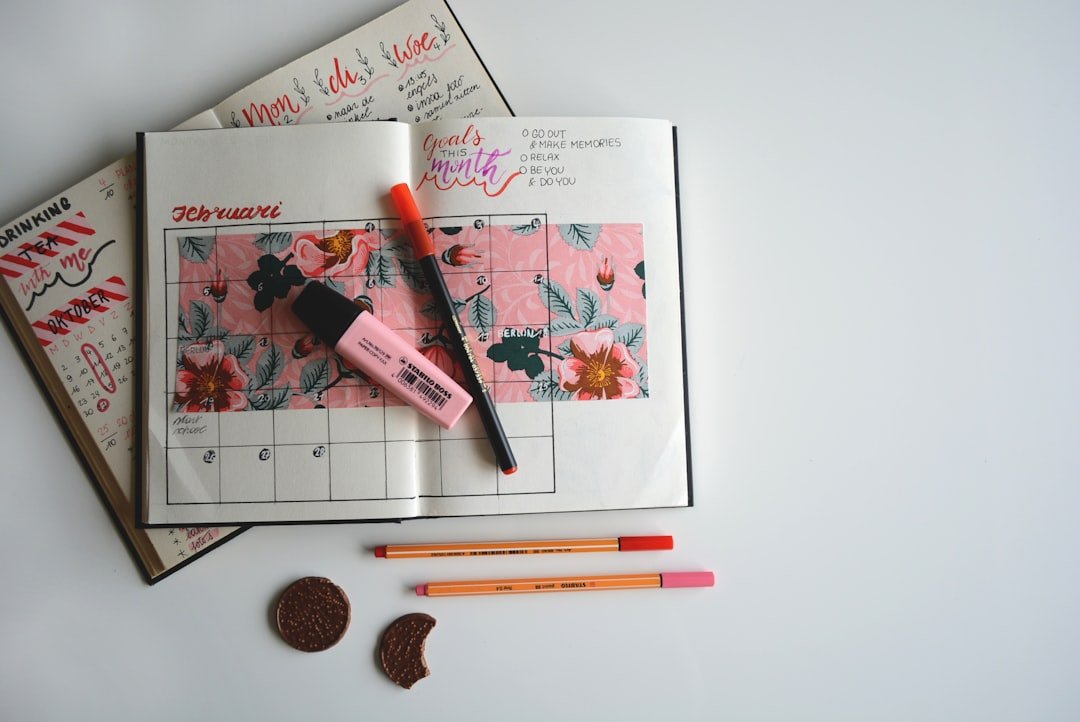Finding the right planner is crucial for individuals with ADHD, as it can significantly impact their ability to manage time, tasks, and responsibilities. A well-suited planner can serve as a powerful tool to help you navigate daily challenges, providing structure and clarity in a world that often feels chaotic. With ADHD, you may struggle with organization, time management, and maintaining focus, making it essential to have a planner that caters specifically to your unique needs.
The right planner can help you break down overwhelming tasks into manageable steps, allowing you to prioritize effectively and stay on track. Moreover, a planner tailored for ADHD can enhance your productivity and reduce stress. When you have a system that works for you, it can alleviate the anxiety that often accompanies disorganization.
You may find that having a designated space to jot down thoughts, appointments, and deadlines helps you feel more in control of your life. This sense of control can lead to increased confidence and motivation, empowering you to tackle challenges head-on rather than feeling overwhelmed by them.
Key Takeaways
- Finding the right planner for ADHD is crucial for managing symptoms and staying organized
- Individuals with ADHD have unique needs that require a specialized planner to support their daily routines
- Look for features such as structured layouts, reminders, and goal tracking in an ADHD planner
- Compare different ADHD planners on the market to find the best fit for your specific needs
- Use tips such as breaking tasks into smaller steps and setting realistic goals to effectively utilize an ADHD planner
Understanding the Needs of Individuals with ADHD
Understanding the Needs of Individuals with ADHD
Choosing the right planner is crucial for individuals with ADHD, as it requires understanding the specific needs associated with the condition. People with ADHD often struggle with executive functioning, which encompasses skills such as planning, organizing, and prioritizing tasks. As a result, a traditional planner may not be sufficient, and a more tailored tool is necessary to accommodate unique cognitive styles.
The Importance of Visual Aids and Reminders
Recognizing the challenges of ADHD is the first step in finding a planner that provides effective support. Individuals with ADHD often benefit from visual aids and reminders, which can help capture their attention and maintain focus on tasks. Colorful layouts, clear sections, and engaging designs can be particularly helpful in this regard.
Selecting a Planner that Resonates with Your Learning Style
Understanding personal preferences and information processing styles is essential in selecting a planner that resonates with individual needs. By acknowledging these needs, it is possible to choose a planner that not only organizes daily life but also motivates active engagement. This, in turn, can lead to a more productive and fulfilling experience.
Features to Look for in an ADHD Planner

When searching for an ADHD planner, there are several key features to consider that can enhance its effectiveness for your specific situation. First and foremost, look for planners with clear layouts and ample space for writing. You may find that having enough room to jot down notes or tasks without feeling cramped is essential for maintaining clarity and focus.
A planner that offers daily or weekly views can also help you visualize your schedule more effectively. Another important feature is the inclusion of visual elements such as color coding or icons. These tools can help you quickly identify different types of tasks or appointments at a glance.
For instance, using different colors for work-related tasks versus personal commitments can streamline your planning process and reduce cognitive overload. Additionally, planners that incorporate checklists or goal-setting sections can provide a sense of accomplishment as you complete tasks, further motivating you to stay organized.
Comparing Different ADHD Planners on the Market
As you explore various ADHD planners available on the market, it’s helpful to compare their features and functionalities to determine which one aligns best with your needs. Some planners are designed specifically for individuals with ADHD, incorporating elements like time-blocking techniques or built-in reminders. Others may offer customizable layouts that allow you to adapt the planner to your unique preferences.
When comparing planners, consider factors such as size, portability, and durability. A planner that fits easily into your bag or backpack can be more convenient for on-the-go planning. Additionally, think about whether you prefer a physical planner or a digital one; each has its advantages and disadvantages.
A physical planner allows for tactile engagement and creativity through doodling or color-coding, while a digital planner may offer reminders and easy access across multiple devices. Weighing these options will help you make an informed decision about which planner will best support your organizational efforts.
Tips for Using an ADHD Planner Effectively
Once you’ve chosen an ADHD planner that suits your needs, it’s essential to implement strategies for using it effectively. One of the most important tips is to establish a consistent routine for planning. Set aside a specific time each day or week to review your tasks and appointments.
This dedicated time allows you to reflect on what you’ve accomplished and what still needs attention, helping you stay organized and focused. Additionally, consider breaking down larger tasks into smaller, more manageable steps within your planner. This approach can prevent feelings of overwhelm and make it easier for you to tackle projects incrementally.
You might also find it helpful to use visual cues or symbols to indicate priority levels for tasks, ensuring that you focus on what matters most first. By incorporating these strategies into your planning routine, you’ll be better equipped to navigate the challenges associated with ADHD.
Customizing Your ADHD Planner for Personalized Use

Creating a Personalized System
Customization is key when it comes to making your ADHD planner work for you. Personalizing your planner allows you to create a system that reflects your individual preferences and needs. Start by adding sections that resonate with your lifestyle—whether it’s a habit tracker, gratitude journal, or space for brainstorming ideas.
Enhancing Engagement and Enjoyment
These additions can enhance your engagement with the planner and make it feel more tailored to your unique journey. You might also consider using stickers or washi tape to add visual interest to your planner pages. This creative element can make planning feel more enjoyable and less like a chore.
Experimenting with Layouts and Formats
Additionally, experimenting with different layouts or formats can help you discover what works best for you over time. This process of trial and error allows you to refine your planner system and make it more effective.
Embracing Ongoing Customization
Remember that customization is an ongoing process; as your needs evolve, so too should your planner. By being open to change and willing to adapt your planner system, you can ensure that it continues to support you on your unique journey.
Incorporating Technology into Your ADHD Planning System
In today’s digital age, incorporating technology into your planning system can offer additional support for managing ADHD symptoms. Digital planners or apps designed specifically for individuals with ADHD often come equipped with features like reminders, alarms, and syncing capabilities across devices. These tools can help ensure that important tasks and appointments don’t slip through the cracks.
Moreover, technology can facilitate collaboration if you’re working on group projects or coordinating schedules with family members. Shared digital calendars allow everyone involved to stay informed about upcoming events or deadlines in real-time. However, it’s essential to strike a balance between digital tools and traditional planning methods; some individuals find that a combination of both works best for them.
By exploring various technological options, you can enhance your planning system while still maintaining the tactile benefits of a physical planner.
Setting Goals and Staying Organized with Your ADHD Planner
Ultimately, the goal of using an ADHD planner is to foster organization and clarity in your life while helping you achieve personal objectives. Setting specific goals within your planner can provide direction and motivation as you work toward accomplishing them. Consider breaking down larger goals into smaller milestones that are easier to track and celebrate along the way.
Staying organized requires consistent effort and reflection on what works best for you. Regularly reviewing your goals and progress within the planner allows you to adjust your strategies as needed. This ongoing evaluation helps ensure that you’re not only staying organized but also making meaningful strides toward achieving your aspirations.
By integrating goal-setting into your planning routine, you’ll cultivate a sense of purpose and accomplishment that can significantly enhance your overall well-being. In conclusion, finding the right planner for ADHD is an essential step toward managing daily challenges effectively. By understanding your unique needs and exploring various features available in planners designed specifically for individuals with ADHD, you can create a personalized system that enhances organization and productivity.
Whether through customization or incorporating technology into your planning routine, the ultimate goal is to empower yourself in achieving personal objectives while navigating the complexities of daily life with confidence.
If you’re exploring options for the best ADHD planner for 2025, you might find the article “Planning Ahead: Discovering the Ideal ADHD Planner for 2025” particularly useful. This comprehensive guide offers insights into selecting a planner that caters specifically to the needs of individuals with ADHD, helping to manage time effectively and stay organized. For more detailed information and to read the full article, visit

